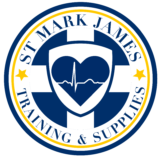The deltoid muscle is a basically a three-headed muscle that is positioned at the shoulder and responsible for lifting the arm away from the body. If there is a deltoid muscle injury, it can cause pain that will worsen if it is not treated with appropriate first aid measures. It is best to consult a doctor before rehabilitation measures are provided.
What is the deltoid muscle?
The deltoid muscle is responsible for giving the shoulder its round shape and facilitates the abduction of the shoulder and rotation of the arm. The deltoids are emphasized during weight training. The deltoid is evident on the shoulder and upper arm among individuals who have a well-defined musculature and low body fat.
The muscle is made up of three heads. The anterior and lateral deltoid connects with the collarbone while the posterior deltoid starts at the scapula. The main function of the deltoid muscle is to abduct the shoulder. Once the shoulder is rotated, the deltoid muscle handles most of the work by guiding and stabilizing the movement. The outward rotation of the arm also involves the muscle.
Symptoms of deltoid muscle injury
If you suspect an injury to the deltoid muscle, you have to take note of the following symptoms:
- Abrupt pain at the back of the shoulder
- Pain when lifting an extended arm at minimal resistance
- Tenderness or swelling at the muscle
Once these symptoms are present, it is important to provide appropriate care in order to prevent the injury from worsening.
Treating deltoid muscle injury

A vital step in treating a deltoid muscle injury is to instruct the individual to stop engaging in any activity or movement that triggered the injury. Until the muscle is properly rehabilitated, it is best to change routine.
For first aid care, you have to apply an ice pack or cold compress over the affected muscle for 15 minutes at a time for the initial 24 hours. If it is not too painful, instruct the individual to stretch the back of the shoulder.
Medical treatment for deltoid muscle injury
Health care professionals can hasten the recovery process by utilizing massage techniques. Individuals will undergo a rehabilitation routine that is comprised of stretching and strengthening exercises as well as massages. If the injury to the deltoid muscle is severe, surgical intervention might be the only option.
If a particular workout involves concentration on the higher mirror muscles such as the anterior deltoid, upper trapezius and pectorals while neglecting the non-mirror muscles, it results to a muscular imbalance around the shoulder. Injuries to the deltoid muscles can be prevented and rehabilitated by balancing both the lower and upper muscles.
Preventive measures
You can prevent additional deltoid muscle injury by ensuring that your workout for the upper body is properly balanced out. For every exercise that involves a push or pull, it is best to try incorporating a row or pull exercise routines to the workout. Additionally, make sure that proper stretching is performed to prevent injury to the deltoid muscle.
